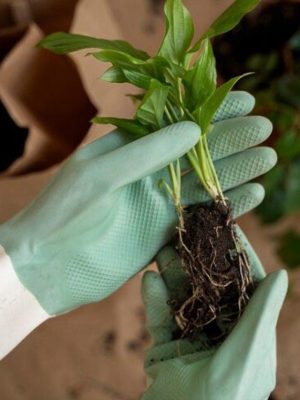
Understanding Plant Transfer Shock: Causes and Prevention Strategies
Gardening can be a deeply rewarding hobby, but it also comes with its share of challenges. One of the most common hurdles gardeners face is plant transfer shock. Whether you’re transplanting seedlings into a garden bed or moving a potted plant to a new container, the stress of relocation can cause plants to exhibit signs of distress. In this article, we’ll explore what plant transfer shock is, its causes, and effective strategies to prevent it, ensuring your plants thrive during the transplantation process.
What is Plant Transfer Shock?
Plant transfer shock, also known as transplant shock, occurs when plants experience stress after being moved from one environment to another. This stress disrupts their growth and development, leading to visible symptoms such as wilting, yellowing leaves, stunted growth, and in severe cases, plant death. Transfer shock is most commonly observed when seedlings are transplanted into garden beds or when plants are moved from one container to another.

Causes of Plant Transfer Shock
Several factors contribute to plant transfer shock:
Root Disturbance:
When plants are uprooted or their root systems are disturbed during transplantation, they experience shock as they adjust to their new surroundings.
Environmental Changes:
Moving plants to a new location exposes them to different light, temperature, humidity, and soil conditions, which can be stressful for sensitive plants.
Water Stress:
Changes in watering frequency or improper watering techniques before or after transplantation can exacerbate shock by depriving plants of essential moisture.
Nutrient Deficiency:
Plants may experience shock if they lack essential nutrients needed for healthy growth. Transplanting can disrupt nutrient uptake, leading to deficiencies.
Timing:
Transplanting plants at the wrong time, such as during extreme weather conditions or when they’re actively growing, increases their susceptibility to shock.
Prevention Strategies
While plant transfer shock is inevitable to some extent, there are several strategies you can employ to minimize its impact and help your plants adjust smoothly to their new environment:

Prepare Plants Properly:
Before transplanting, ensure plants are well-watered to minimize stress. Gently loosen the roots and remove any damaged or diseased parts.
Choose the Right Time:
Transplant during cooler, more favorable conditions, such as early morning or late afternoon, to reduce stress on plants.
Acclimate Plants:
Gradually expose plants to their new environment by placing them outdoors for increasingly longer periods in the days leading up to transplantation. This helps them adjust to changes in light, temperature, and humidity.
Provide Adequate Watering:
Keep soil consistently moist before and after transplantation, but avoid overwatering, which can suffocate roots. Water deeply to encourage root establishment.
Protect from Extreme Conditions:
Shield transplanted plants from harsh sunlight, strong winds, and temperature extremes by providing shade or using protective covers.
Amend Soil:
Prepare the planting site by amending the soil with compost or organic matter to improve drainage and provide essential nutrients for healthy growth.
Use Transplanting Solutions:
Apply transplanting solutions or root stimulants containing beneficial microbes and nutrients to promote root development and reduce stress.

Mulch:
Mulching around transplanted plants helps retain moisture, regulate soil temperature, and suppress weeds, reducing stress on newly established roots.
Monitor and Adjust:
Keep a close eye on transplanted plants and monitor their progress regularly. Adjust watering, fertilization, and environmental conditions as needed to support recovery and growth.
Patience:
Understand that some degree of stress is inevitable during transplantation, and plants may take time to recover fully. Be patient and provide ongoing care and support as they adapt to their new surroundings.
Plant transfer shock is a common challenge faced by gardeners, but with proper preparation and care, it can be minimized. By understanding the causes of transfer shock and implementing effective prevention strategies, you can help your plants transition smoothly to their new homes and thrive in their new environment. Remember to provide adequate water, nutrients, and protection while monitoring their progress closely. With patience and attention to detail, you can ensure successful transplantations and enjoy healthy, vibrant plants in your garden or indoor space.




